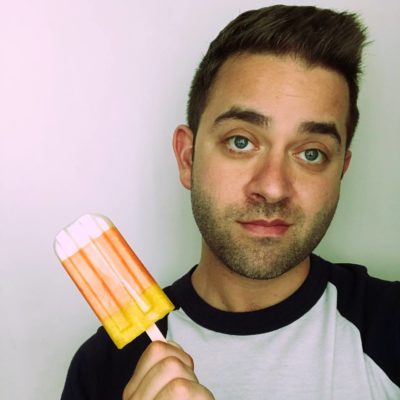 Name: Michael Varrati
Name: Michael Varrati
Age: 36
Birth Place: Gallup, NM
Sexuality: Gay
Notable films: Tales of Poe (2014), A Christmas in Vermont (2016), He Drinks (2018)
The curated portfolio of film journalist Joe Lipsett
by Joe Lipsett
 Name: Michael Varrati
Name: Michael Varrati
Age: 36
Birth Place: Gallup, NM
Sexuality: Gay
Notable films: Tales of Poe (2014), A Christmas in Vermont (2016), He Drinks (2018)
by Joe Lipsett
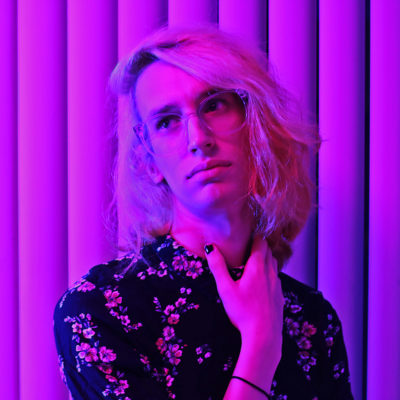 Name: DRW Phillips
Name: DRW Phillips
Age: 23
Birth Place: Indianapolis, IN
Sexuality: Pansexual
Notable films: Posters Lazarus, Bliss, Long Lost
When did you know you were queer? When did you come out?
DRW: I knew that I was trans from as far back as elementary school, but it was also something that I repressed for years. In the eighth grade I knew that I was, at the very least, bisexual (shout out to Europe’s “Final Countdown” video for helping me get there) and I attempted to come out as bi to one of my closest friends. It backfired and my entire friend group turned into my tormentors. I dove back into the closet through high school and wasn’t able to come out and explore my sexuality until college.
It wasn’t until the unending terror of the 2016 election that I finally came out as transgender. I was no longer in a place where I was willing to be intimidated anymore.
You’ve made quite a name for yourself making “alt” posters for famous films. How did that begin?
DRW: I did a lot of loose design in high school and college, little things for the music scene or classmates’ films. At the end of 2017 I decided that this was something I wanted to pursue seriously and planned an entire year of doing one poster design for a film a day. I’d been really taken by artists like Scott Saslow who had done similar projects before and loved the variety a project like this demanded.
I did over 365 posters on my Instagram account in 2018 and have been fortunate enough to begin to turn that into a full time career as a designer. Since then I still make room for self initiated pieces in between my official projects to keep trying new styles and adding more tools to my belt.
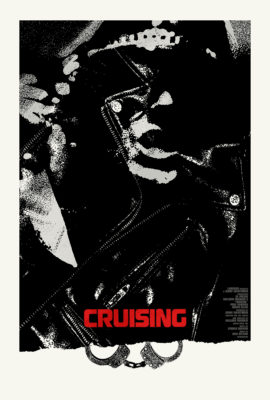
DRW’s alt poster for Cruising
You have created posters for all different kinds of films, but you seem most prolific in the horror genre. What attracts you to those projects?
DRW: I’m a big cinephile, but my biggest love will always be for horror films. It’s one of the most potent genres in the world that allows filmmakers and artists alike to take creative leaps that wouldn’t be allowed anywhere else. Exploring films like The Fog, Manhunter, The Devils, and even Zulawski’s Possession allowed me to be as creative and experimental as possible in a way that would still properly serve the films I was paying homage to.
A majority of the artists that I look up to are those that operate within the horror and genre space. Jay Shaw, Graham Humphreys, Stephen Sayadian, Chris Garofalo, and others have all made indelible marks on myself and horror fans around the world through their art. On top of that, the horror community is one of the strongest and most supportive in the world.
As a producer on the queer horror podcast Dead for Filth, I became connected to that community and have seen first hand how spectacular and unique it is. People are so excited to share their love for these movies in a way no other genre or fandom can replicate. It’s always an honor for me to be asked to contribute to a horror film.
 What films (queer or not) have made a significant impact on you and your work? In what way?
What films (queer or not) have made a significant impact on you and your work? In what way?
DRW: Luis Buñuel’s The Phantom of Liberty changed my life. It’s a surrealist comedy from 1974. It has no plot but it’s highly subversive and strange. The poster by my favorite artist in the world, René Ferracci, is outrageous and iconic. It’s a simple collage of a bright pink butt dressed as the Statue of Liberty with a wilting torch and standing on ostrich legs. It was used on the VHS and DVD and it just hit me like a ton of bricks the first time I saw it casually sitting on a shelf at the library. The movie and the poster together were like a 1-2 punch that completely threw me off my axis and set me on a new path. I now have that original poster framed above the desk where I work.
How progressive or welcoming is the industry for queer creators right now?
DRW: I’ve been rather fortunate within the horror and design communities to have found a great deal of acceptance. Most everyone I know within the horror space identifies within the LGBTQ spectrum in one way or another. The world of design is still predominantly white and male, but what matters most is the work and less who is behind it.
Along with the democratization of digital design tools, the space has started to open up to more diverse voices. We still have a long way to go in the entertainment industry as a whole, though, particularly for trans voices and creators.
That shouldn’t dismay anyone from wanting to step into the space, though. The only way we’ll be able to become as progressive and open as we need is to have as many people from different backgrounds and identities join and change the industry from within. The only people who can speak for us are ourselves.
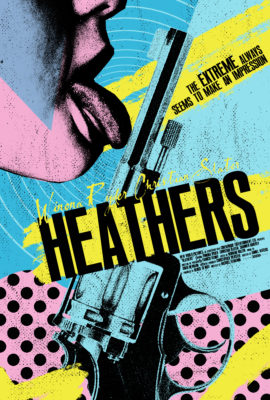
DRW’s alt poster for Heathers
Do you believe that your sexuality informs your work?
DRW: I do believe that my work is informed by my trans and queer identity. Creating any kind of art is an expression of a point of view. When I create a design, whether as a personal or commissioned project, it’ll always be simply an interpretation of a film or an album through my inherently queer, trans perspective. That’s something that cannot be separated from the work – just as it can’t be separated from who I am as a person or as an artist.
Do you subscribe to queer readings of your films?
DRW: I’m a big advocate of finding queer readings within traditionally “non-queer” media. There are simply too few stories out there detailing our perspective and identities that we still have to search for coded characters and narratives to fulfill our natural need to see ourselves affirmed within media.
As someone who identifies as a queer individual, I believe that everything I do is, in one way or another, queer and therefore a slightly transgressive act. It’s always a great compliment if others see that as well.
Have you interacted with many queer horror fans of your films? What has that experience been like?
DRW: Queer horror fans are the best people in the world. I am gobsmacked whenever I see or meet anyone within the queer horror space that owns piece of my work.
Someone recently had the artwork that I did inspired by John Carpenter’s The Fog made into their shower curtain. I do not have to words to express how crazy and amazing that is. That is the main audience I am looking to please.
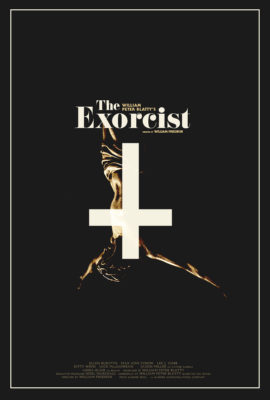
DRW’s alt poster for The Exorcist
What’s next for you?
DRW: I have a few more official posters and a limited edition blu-ray coming out later this year that I can’t wait to share with the world. I hope to be able to continue making strange and subversive designs for some time.
Follow DRW on social media: